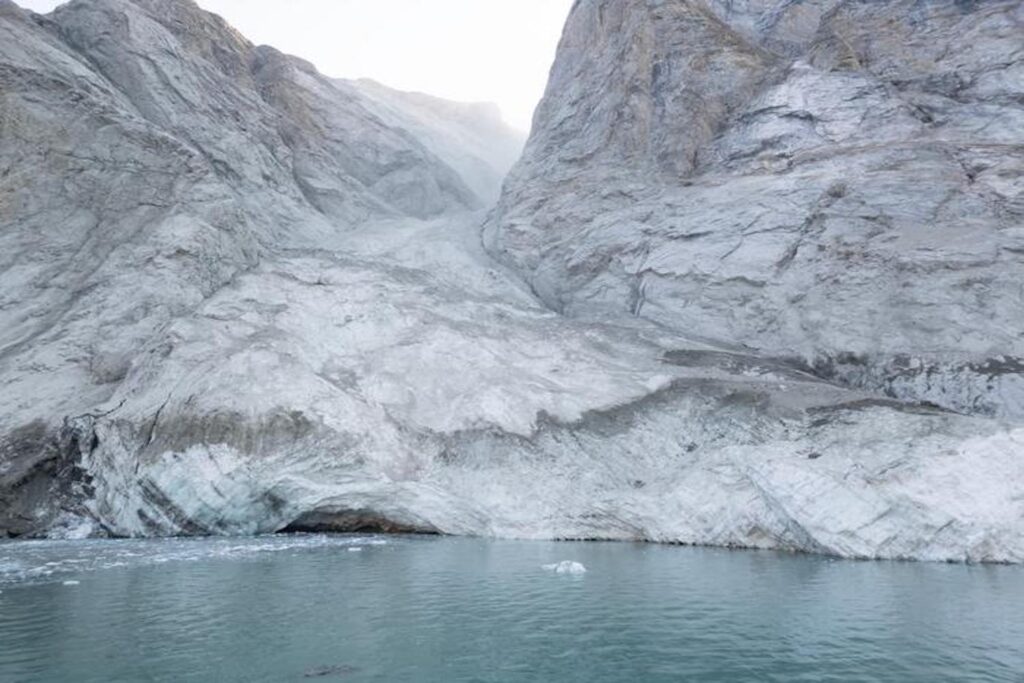Much of icy Greenland may soon go the way of the dodo, according to a group of researchers’ latest climatological analysis.
Soon is a relative term, but the team posits that just a few degrees of temperature change could put the second-largest ice sheet on Earth into a death spiral, catalyzing over 20 feet (6.1 meters) of global sea level rise and drastic changes to the immediate marine environment. The team’s research was published in The Cryosphere.
Greenland’s ice sheet is one of two on Earth, the other spanning Antarctica. Combined, the two ice sheets contain more than 68% of Earth’s fresh water, according to the National Snow and Ice Data Center. Greenland’s ice sheet covers 656,000 square miles (1.7 million square kilometers), or about 80% of the island. The ice is over 1.9 miles (3 km) thick in places and if the entire sheet melted, sea levels would rise 24 feet (7.4 meters).
In its work, the team used a climate model to simulate how different climates would affect Greenland’s surface mass—in other words, they applied different climate scenarios to see how quickly or slowly the Greenland ice sheet would melt. The team found the tipping point for Greenland’s ice sheet occurs when approximately 230 gigatons of ice is lost in a single year, which corresponds to a 60% decrease from the pre-industrial equilibrium for the ice sheet. That event would be the point of no return for Greenland’s ice, which would completely disappear in a relatively short period (between 8,000 years and 40,000 years, according to Science X Network).
All of this sounds very hypothetical, until you consider that the team ties that threshold to a global temperature increase of 6.12 degrees Fahrenheit (3.4 degrees Celsius) compared to pre-industrial levels.
The team’s findings come on the heels of a Nature paper published last year that found that calving from the landmass’s ice sheet ubiquitously accelerated between 1985 and 2022. Furthermore, last year’s team found that previous research underestimated mass losses from Greenland by as much as 20%, and the mass loss the team reported had “minimal direct impact on global sea level but is sufficient to affect ocean circulation and the distribution of heat energy around the globe.”
Greenland is in the zeitgeist because of President Trump’s repeated claims about wanting to buy Greenland from Denmark. Greenland has been part of Denmark for six centuries; though it gained its autonomy in 1979 and has its own local government, the island is a territory of Denmark.
Trump’s insistence has prompted silly moves from his political allies and followers; yesterday, Congressman Buddy Carter of Georgia (no relation to Georgia native and former U.S. President Jimmy Carter) introduced H.R.1161, a bill meant to “authorize the President to enter into negotiations to acquire Greenland and to rename Greenland as ‘Red, White, and Blueland’.” The bill is a reminder of how much of American politicking is performative grandstanding, and not done in service of political representatives’ constituents.
It may be thousands of years before such a tipping point—and given that the team’s work was a simulation, there’s still plenty of time for humankind to right the ship. But the study shows one plausible scenario should global warming continue at its current rate—a worrying sign whether you are in the market for Greenland or are simply an Earthling.







